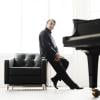
When I first started browsing the classical musical aisles of a Sam Goody store in Philadelphia in the 1970s, box sets held a special allure. The complete collections of almost anything — the Brandenburg Concertos, Beethoven quartets, Erik Satie — seemed to me like thick Russian novels, promising a complete musical narrative rich with character and detail along the way. Most of those vinyl compendiums were beyond my undergraduate student budget, which only made me look and long for them all the more.
Impressive as it is for an ensemble or solo artist to record such a body of work, it’s a kind of Olympian feat to perform it live, especially in a single concert. On Sunday, Feb. 9, at Davies Symphony Hall, the prodigiously talented Korean pianist Seong-Jin Cho embarked on a two-hour-and-45-minute journey through the complete solo piano works of Maurice Ravel. (Cho is set to reprise the program this evening, Feb. 11, at Los Angeles’ Walt Disney Concert Hall.)
Sunday’s recital was a marvel, not just because the performer successfully navigated the music’s technical demands, shimmering effects, and emotional nuances — all of this accomplished without a score. What mattered and lingered were the multiple ways in which Cho shaped and shaded the music, making it feel at once distinctively marked and for that all the more Ravelian.
Familiar pieces that can cloy (Pavane pour une infante défunte) or veer into gaudy mannerism (Valses nobles et sentimentales) came across with limpid, natural grace and judiciously applied pressure points. There was abundant and vivid scene painting, from the gushing treble-clef fountain sprays of Jeux d’eau that gave each droplet note its own sparkle to the clipped, paper-thin phrases that made the owl moths conjured in Miroirs hover and flicker weightlessly. There were fireworks, too, exultant in the Toccata of Le Tombeau de Couperin, which closed the evening, and in the fiendishly manic final movement of Gaspard de la nuit, depicting the glowering imp Scarbo.
The program was structured, as many novels are, chronologically and divided into three chapters by two intermissions. The first section opened with a dramatically colorful 1893 work from Ravel’s teenage years, Sérénade grotesque, followed by the neo-Baroque Menuet antique.

Right away, in the Serenade, Cho flashed some of the high-contrast dynamics that would recur throughout the evening. The effect, here and elsewhere, was of phrases conversing with each other — one whispering, the other replying with a voice excitedly raised — an approach at once striking and subtly modeled. In the Menuet, notably in the becalmed trio section, orderly rhythms became more supple and elastic.
During Ravel’s Sonatine, which closed the first section of the concert, Cho occasionally let his left hand barely trail his right, a kind of rhythmic blurring reinforced by the way he lingered over a close harmony or dissonant chord. There were times later on when that technique and some heavy pedaling came at the expense of clarity. Any misgivings were fleeting.
Ravel’s piano compositions invoke Baroque dance forms, reference painting and poetry, and even pay tribute, in Le Tombeau de Couperin, to soldiers killed in World War I. The bravura middle section of the recital was devoted to the composer’s two most extensively pictorial or narrative pieces, Miroirs and Gaspard de la nuit. In the former, the wistful phrases of “sad birds” kept dying away faintly into each other. An oceangoing boat got a Claude Debussy-like surface of shimmering, shattering water played off against a broadly surging current.
The recital reached its zenith in the furiously concatenating chain of Gaspard’s Scarbo. Cho, who seemed slight and businesslike walking on- and offstage, seemed to rise up and tower over the keyboard at certain times and at others to bend down so low as if to scrutinize the texture of the keys (which he would wipe off now and then with a handkerchief). His Scarbo was a nearly reckless force of slashing chords, explosive passagework, and a haunting, almost musically perverse shrug, as if to deny all that technically daunting torrent had actually happened.
There was more to come in part three: a few deft miniatures, a translucent Fugue in Tombeau, and a percussive spurt of repeated notes and keyboard-spanning flights in that work’s fleet Toccata. But not everyone stuck around for these. A number of seats were left empty after the second intermission.
To be sure, there is a risk-reward calculus in any all-one-composer program. Perhaps, for some listeners, nearly three hours of Ravel was more than enough. But on this charmed night, whether you knew Ravel’s music well or hardly at all (like my delighted seatmate, a stranger), the discoveries kept coming. Cho, whose win at the 2015 Chopin International Piano Competition launched his career 10 years ago, can’t be back at Davies soon enough. Meanwhile, for anyone who missed this program, Cho’s recording of the complete Ravel came out last month. Enjoy it on CD — or as a streaming box set for today’s listeners.




